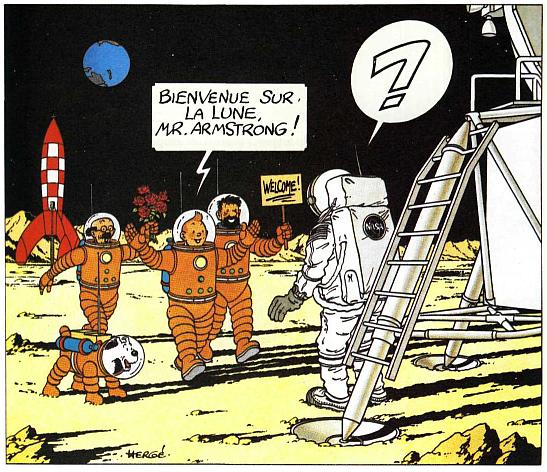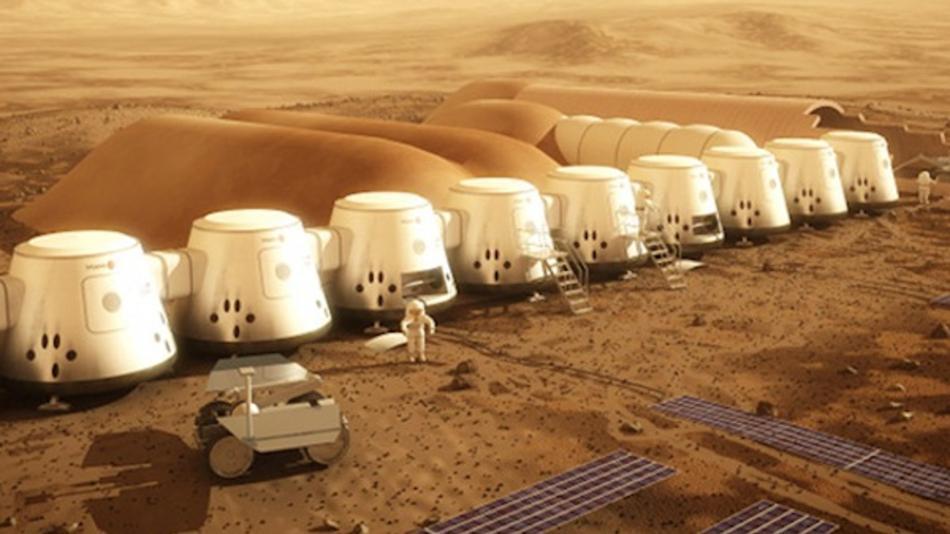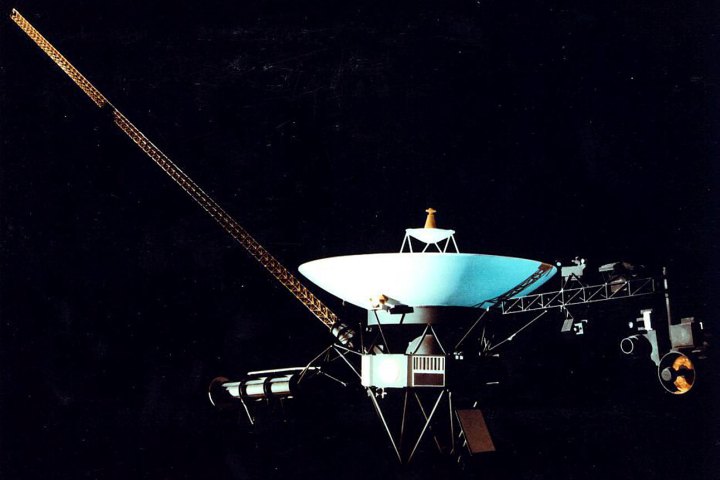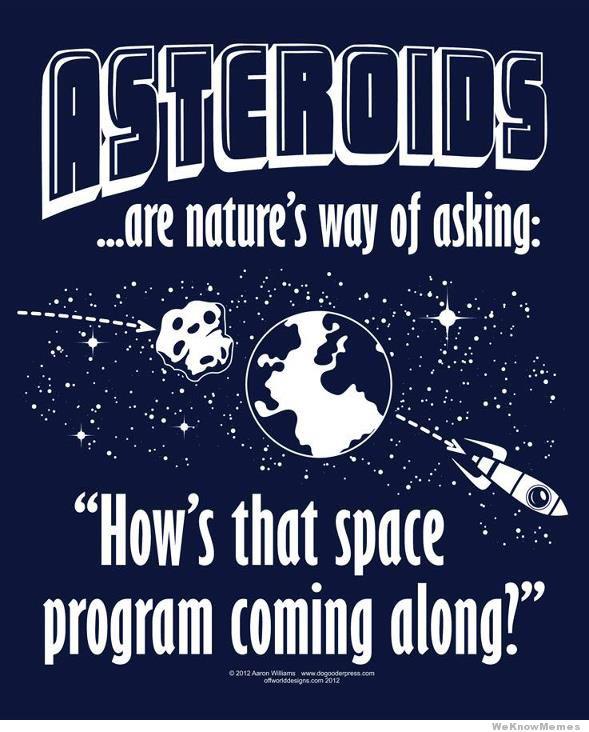
Explorers on the Moon.

Haunting the Web Since 1999

(Klaatu barada nitko?) All that being said, one Comic-Con remake reveal I can get excited about — although “Executive Producer Seth McFarlane” gives me a moment of pause — is Neil DeGrasse Tyson’s upcoming 13-episode reboot of Cosmos.
“‘There’s never been a more important time for COSMOS to re-emerge than right now. I want to make this so entertaining, and so flashy, and so exciting that people who have no interest in science will watch just because it’s a spectacle,'” MacFarlane said in a news release.”

Of late, astronomers have been finding new planets all the time, including one right in our cosmic backyard. Still, these two seem special: NASA has found two of the most Earth-like planets yet in Kepler 62f and Kepler 62e, 1200 light years away.
“The Kepler 62 system resembles our own solar system, which also has two habitable planets: Earth and Mars, which once had water and would still be habitable today if it were more massive and had been able to hang onto its primordial atmosphere.”

A NASA/JPL simulation of Titan’s atmosphere suggests a chaotic chemical brew conducive to life on Saturn’s most interesting moon. “Now we know that sunlight in the Titan lower atmosphere can kick-start more complex organic chemistry in liquids and solids rather than just in gases.” (Titan image via this 2011 post.)

James Fallows speaks with Space Adventures co-founder Eric Anderson on the coming age of space colonization. “One key to making all this happen is that we need to use the resources of space to help us colonize space…The near-Earth asteroids, which are very, very close to the Earth, are filled with resources that would be useful for people wanting to go to Mars, or anywhere else in the solar system. They contain precious resources like water, rocket fuel, strategic metals.”
Along the same lines, and from last June, a Dutch company called Mars One has a very specific timetable in place for Mars colonization. “Lansdorp plans to send another couple of adventurous astronauts to join the colony every two years, but the idea is that no one gets a return journey. This is a permanent base, a Plymouth Rock in an entirely new world that will begin the long, slow and painstaking process of terraforming it.” The first four colonists, set to leave Earth in 2023, will be chosen this year.
Update: So far, it seems, the Mars One project has received 40,000 applications.

It’s been out in the fringe territories for a few years, but apparently now it’s official: Voyager I has left the Solar System. “We’re in a new region. And everything we’re measuring is different and exciting.”
Update: Belay that- NASA’s Voyager team says hold the champagne: “In December 2012, the Voyager science team reported that Voyager 1 is within a new region called ‘the magnetic highway’ where energetic particles changed dramatically. A change in the direction of the magnetic field is the last critical indicator of reaching interstellar space and that change of direction has not yet been observed.”

Consider this a wake-up call. This is one more reason why we need to invest in our space program — because, right now, we are playing chicken with the universe. That deadly asteroid might not hit tomorrow, or even in 2106. But the danger is real. As author Larry Niven put it, “the dinosaurs became extinct because they didn’t have a space program. And if we become extinct because we don’t have a space program, it’ll serve us right!”


An auspicious site for New Rome: Seven hills on Mars are named after the fallen astronauts of Columbia. “Spirit would go on to spend several years exploring the Columbia Hills until, struggling in the Martian soil, it would finally cease to function in 2010. Which — striving and striving, until you can strive no more — seems an appropriate tribute to seven people who gave their lives so that the rest of us might forge ahead.”
“Under the agency’s procedures, the box should not have been opened without knowledge of a NASA scientist who is responsible for guarding Mars against contamination from Earth. But Planetary Protection Officer Catharine Conley wasn’t consulted. ‘They shouldn’t have done it without telling me,’ she said. ‘It is not responsible for us not to follow our own rules.’“
It seems NASA’s Curiosity may have inadvertently brought Terran microbes along with it, which could become hugely significant if the robot encounters water, in which case they become either the potential seeds of new life on Mars and/or the 21st-century equivalent of the smallpox blanket. Er…oops.
Meanwhile, while we’re bringing life to Mars, Jupiter may have once again protected us from a Deep Impact/Melancholia-like disaster. “This is the third time since 2009 amateur astronomers have witnessed an impact flash on Jupiter. The massive gas giant, which exerts considerable gravitational pull, is something of a cosmic whipping boy in our solar system, regularly shielding inner planets like Earth from potential collisions.” So, if you’re keeping score at home, that’s Jupiter 3, Bruce Willis 1.